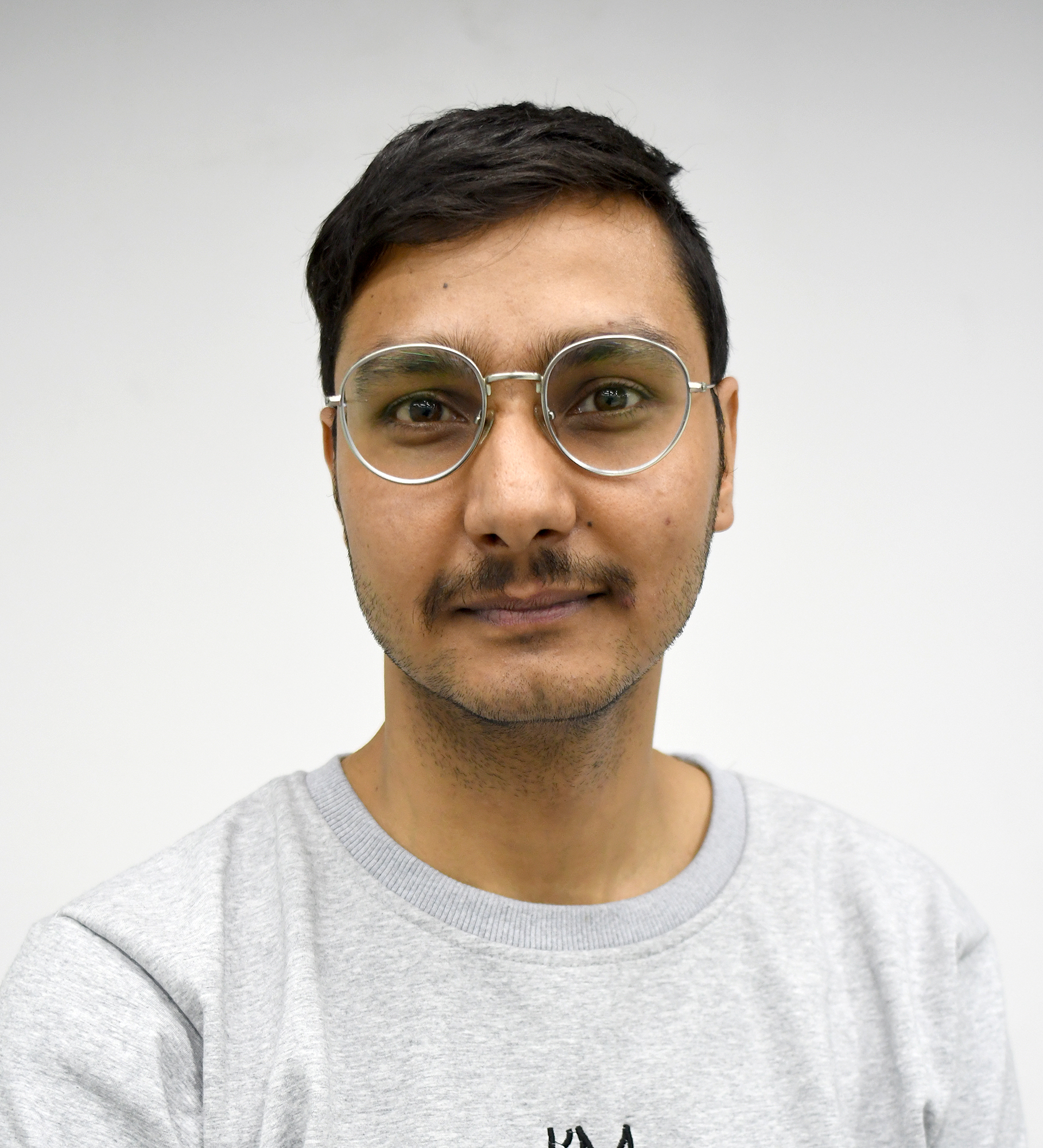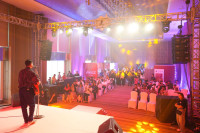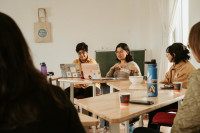Culture & Lifestyle
Being a photojournalist in a pandemic
The coronavirus has challenged reporters to find new ways to work while staying safe. But that’s easier said than done for photojournalists.
Shashwat Pant
When he returns home, before meeting his family, he changes his clothes in his store room below the house, washes it, takes a shower and then goes to meet his family. The life of many photojournalists like Gautam has drastically changed ever since the pandemic and there’s not much they can do except adapt.
“I know there are risks but being a photojournalist is what I like to do,” says Gautam. “It is my responsibility to be in the know and show people what is going on.”
The pandemic has brought the world to a scary place. Infection rates are increasing by the day: today the total number of cases in the Kathmandu valley has reached over 11,500. And while many have been working from home, there are some for who working from home is not a possibility. Photojournalists have to go where the stories take them and thus risk being exposed to the virus is more.
“Of course I do not feel safe,” says Gautam, who has taken four PCR tests so far. “Right now you never know who has the virus and who doesn’t. Whenever I go to a crowded place, I get concerned. I try to keep safe, but it’s not as simple as people think it is.”
Angad Dhakal, a photojournalist at Kantipur Media Group, says that he too was scared in the beginning and didn’t get out of his house until absolutely necessary. He would check his temperature every hour or so, paranoid that he would get infected. However after going to Province 5, the hotspot of Covid-19 cases in the country in the initial days of the lockdown, to cover a story and seeing so many people, many with little means to buy protective gear, having to deal with the virus headon, he says his fear subsided a little bit.
“There were people without masks on, walking barefoot in quarantine areas without fear or awareness. They had no choice. At that point I realised that sooner or later the virus will make its way everywhere, and instead of being paranoid, we all had to find a way to be smart and careful and learn how to live with it.”
While he was there, he took one of his best shots of the pandemic. The picture made it to the front page of the Post’s sister publication, Kantipur. “A man, carrying his child, both without masks, was walking beside a quarantine camp. I felt it showed how even though one part of the population was panicking, there was another which couldn’t live with the fear as they needed to work to get food on plate. It was a very humbling experience,” says Dhakal.
His thoughts are echoed by Prakash Mathema, a photojournalist associated with Agence France-Presse, who says that the fear of contracting the virus is a major challenge he’s been facing. “I do everything in my power to keep safe, but I know that it’s not in my hands sometimes,” says Mathema, who says he even sanitises his camera every day.
While safety is one of their biggest concerns, another challenge photojournalists have been facing is finding new stories. With much of the country under lockdown still and life at a standstill, there is little activity happening for photojournalists to cover, they say. Assignments have thus dried up.
Monica Malla, a photojournalist at Nagarik News Network, says that what makes the current situation harder is the uncertainty. While before they knew what was going to happen on a particular day, now everything is up in the air.
“Take the whole issue with Rato Macchindranath last week. No one could have guessed that the incident would escalate like it did,” she says. “This uncertainty is what makes it difficult for us otherwise I feel there are a lot of things we can capture on our lenses right now.”
But there are others, like Gautam, who says he takes this as a challenge. “I try to make sure I click something different and interesting. Sure content is scarce, but there are things we can capture and tell stories about,” he says. The work he does now will also go down as historical documentation of the pandemic in the valley, he says.
He gives the example of his work where he did a photo story on how the army handles the body of a deceased Covid-19 patient. “I knew the risks I was subjecting myself and my family to by doing the story, but I was really proud of the work I did there,” says Gautam, who says this type of work is what makes him do what he does: bring stories that need to be shown to people who are unaware. He keeps doing this despite the risks and despite being unpaid.
The months of lockdown (and prohibitory orders) has deeply jolted all types of business, the media industry included. Because of financial restrictions, many have stopped publication, many have laid off employees and made pay cuts.
“Most of us haven’t been paid for nearly five months. But we still do it because this is what we like doing. Documenting things because we are passionate about it,” says Gautam.
Besides financial stress, a more stressful problem that photographers say needs immediate addressing is the lack of safety measures. The organisations for whom many photojournalists work for have been giving them little to no assistance when it comes to providing them safety equipment, such as personal protective gear (PPE), gloves, face shields, even masks. The photojournalists have to get the tests done on their own expenses and media houses are also not providing them any insurance money. Many say that the workplace hasn’t been too demanding of their work, but they have not received any help from the organisation.
“The only help we’ve got is from within the community. The PJ Club (Photojournalists’ Club) has provided members Covid-19 insurance of up to Rs 100,000. It’s not a lot but this kind of help goes a long way,” says Mathema.
With such little precautions, families of these photojournalists are afraid and apprehensive about letting their family members go out in the field. Malla says that she sometimes has to lie to her family members when they ask her where she’s been.
“Sometimes I tell them I went to Basantapur instead of telling them I went to Teku or to cover a festival,” says Malla. “They worry a lot, but I understand why they worry which is why I don’t tell them.”
Mathema shares that tensions run high in his family too when they know he is in a crowded place for a story. “Sometimes my wife sees me at some event on Facebook live and calls me asking me to not be near such crowds. I understand her concern and I try to respect her request,” says Mathema.
The fear of catching the virus is high among photojournalists and it will always be there, says Dhakal, especially because time and again news surfaces of journalists being infected. This is why he has undergone the PCR test three times and tries his best to keep distance while taking photographs. But the job has to be done, he says.
“I haven’t been too close to people at home for months now. They’ve been understanding so far as they know this is what I do. But I know that they are worried, but this is what I love to do,” says Dhakal.




 7.12°C Kathmandu
7.12°C Kathmandu













%20(1).jpg&w=300&height=200)

